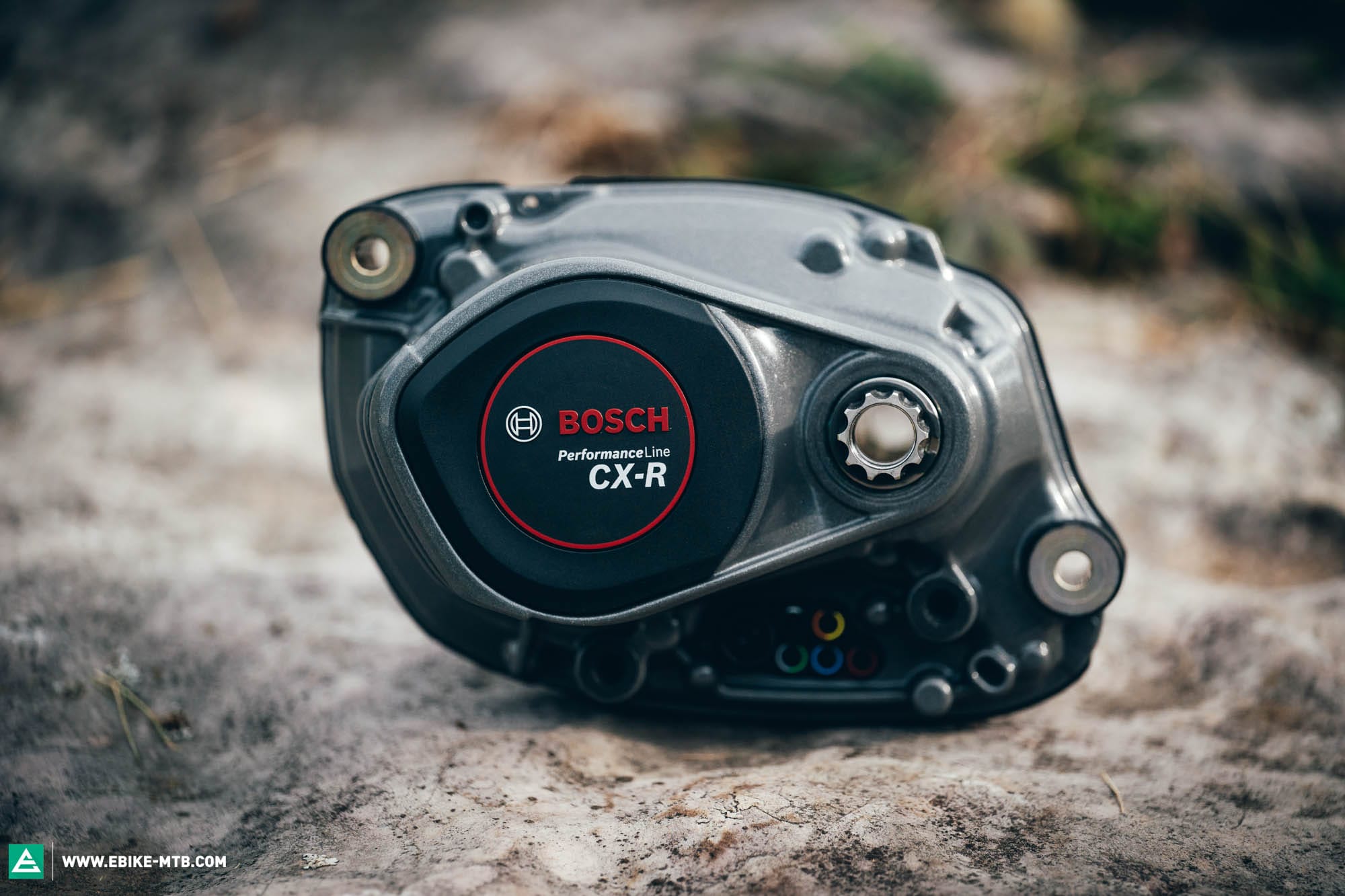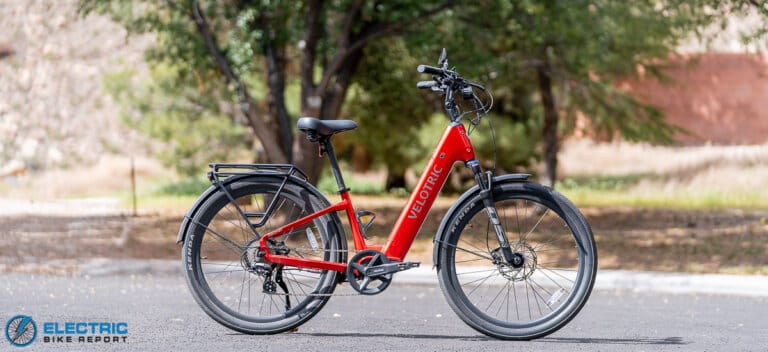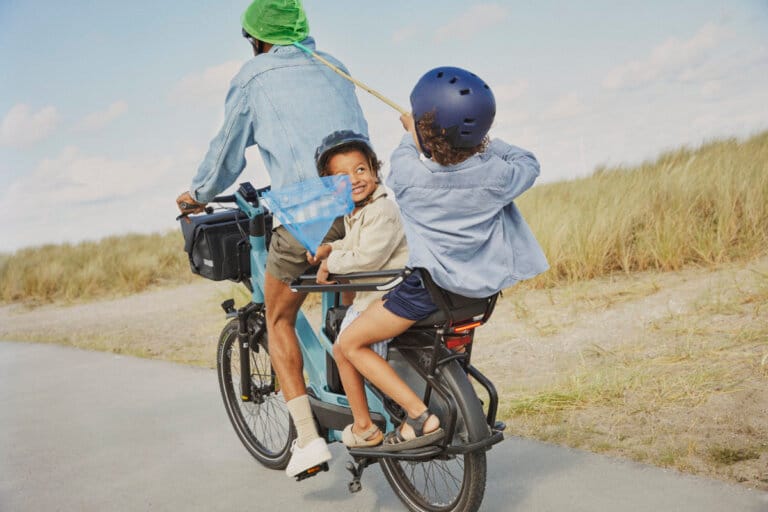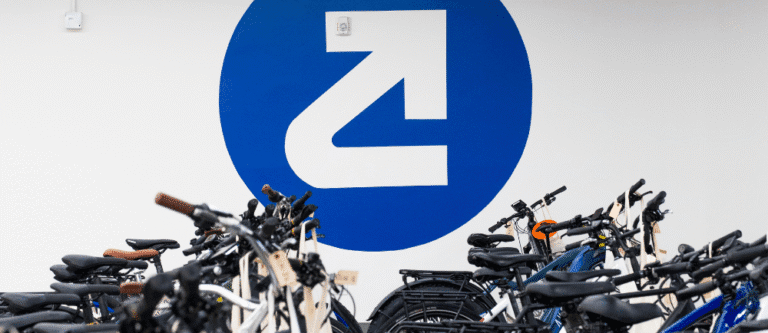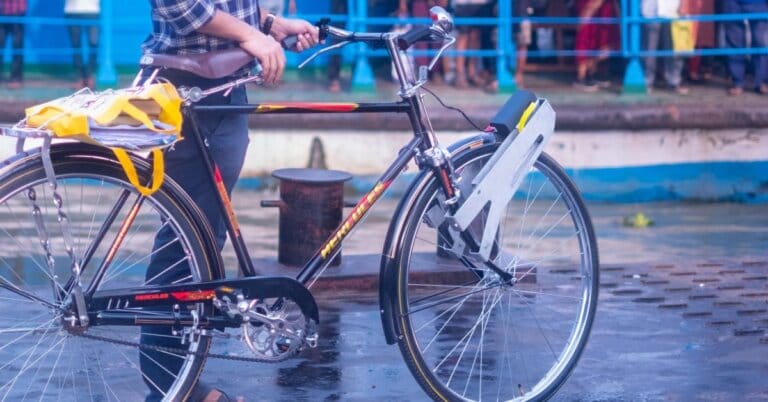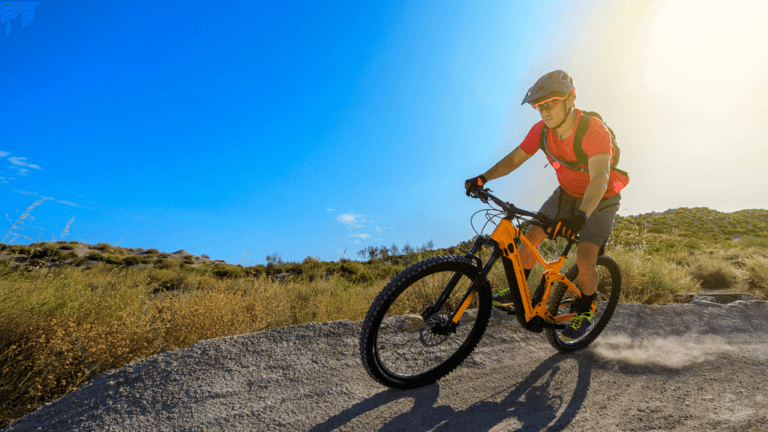First ride review: Bosch’s new MY26 software update, next-gen CX-R motor, Kiox 400C display and more
Since Eurobike 2024, the eMTB world has been shifting fast– and our latest reader survey, with over 17,000 participants, confirms this trend. New motors with increased output, traction control and class-leading power-to-weight ratios are shaking up the market. Now Bosch, one of the industry’s undisputed heavyweights, is responding with a bold move: a major software update for the Performance Line CX Gen5 motor, a brand-new CX-R motor, and plenty more…

It’s a tricky situation. On the one hand, Bosch need to close a few gaps; on the other, some bigger questions are starting to emerge.How much is enough and how much is simply too much? How do we stop the e-bike world from spiralling into a crazy game of numbers, engaging in a race for superlatives that ultimately does more harm than good? We explored exactly that in our E-MOUNTAINBIKE Think Tank, where we brought together leading decision-makers and experts from across the eMTB sector to discuss the future of performance. That’s exactly why we’ve chosen not to throw around blunt figures and flashy superlatives in the headline. They might drive clicks and create hype but in the end, they miss the point of what really matters.
But more on that later. For now, let’s focus on the new gear. What exactly have changed? What is the new system capable of and where is there still room for improvement? One highlight right up front: we’ve already ridden the new MY26 system back-to-back with the latest drives from DJI and Specialized. You’ll find our first impressions right here.
With the MY26 launch, Bosch combined smart software tweaks with targeted hardware upgrades. Here’s a quick overview of the key innovations:



What does the MY26 Bosch Performance Line software update actually bring?
At last 750 watts? Finally 100 Nm? You might think so but don’t be fooled by the numbers alone. Sure, the MY26 software update unlocks more power and torque but the real game changer is the brand-new eMTB+ mode – but more on that in a second.
With the latest update for the Performance Line CX Gen5, Bosch are making one thing clear: you can get more power,but only if you want it. The extra motor output isn’t activated by default. Instead, it’s up to the rider to manually opt in. And rightly so because with more power comes greater wear, increased energy consumption and reduced range, especially if you’re riding full blast the whole time.

The new MY26 modes, including the optional power boost, are available as a free over-the-air update via the Bosch eBike Flow app. So, what does that mean in numbers?
- Torque increases from 85 to 100 Nm
- Peak output increases from 600 to 750 watts
- Support ratio rises from 340% to 400%
All ride modes can be configured directly from the app to suit your riding style in the app. Straight out of the box, the motor has Bosch’s standard settings. But if you decide to unlock the higher performance values, the app immediately warns you : “More power means more wear on drivetrain components.”
When and how can you get the update?
Just download or update the Bosch eBike Flow app via the App Store or Google Play, connect your eMTB as usual, and start the update. No trip to your local dealer required, no hidden costs, everything happens wirelessly and effortlessly, over the air. The MY26 software update will be available from July 2025.

The new Bosch eMTB+ mode MY26
Even more exciting is the new eMTB+ mode, which slots in between the existing eMTB and Turbo or Race modes,depending on the motor. This is Bosch’s way of not just offering more power, but also giving you the right tool to control it. Because when it comes to performance, power is only half the equation – control is the other.
Just like Tour+, eMTB and Race, eMTB+ is a dynamic ride mode that automatically adapts the motor output based on your pedalling input and the terrain you’re riding on. But this mode introduces a key advancement: Dynamic Control.
Behind that name is a sort of traction control system that senses when your rear tire generates traction and more importantly, when it doesn’t. When traction starts to break, the motor gently reduces power to help maintain control, without you having to intervene manually.

So, what exactly does Bosch’s new Dynamic Control do?
eMTB+ constantly switches between two internal power curves: one aggressive, with the usual punchy response, and one that’s more subtle and finely tuned.
The drive unit’s sensors continuously monitor the gradient, terrain and pedal pressure. If the system detects that your rear tire is about to lose grip, for example on loose ground or in a wet root section, it automatically dials back the motor’s output. No action needed from your side.
Need an analogy? Think of your suspension. Open the rebound damping all the way and it snaps back quickly, that’s your classic eMTB+ with full punch. But close it down and the suspension is more composed and more controlled. That’s exactly what eMTB+ does: it puts power down more precisely and predictably, especially where it matters most– on gravel, steep root climbs and technical uphills, where a rear wheel spinning out of control is no longer an issue.
At the same time, Extended Boost gives you the option to call up targeted bursts of power with short pedal strokes, which is perfect for getting through rock gardens or popping up ledges where there’s no time to throw in a full pedal turn.
And of course, everything can be fine-tuned via the eBike Flow app. Want to keep the standard eMTB mode set up for range-efficient touring? No problem. Let eMTB+ take over as your sportier trail mode with more punch, more precision, and more brains.

Still riding with a Bosch Performance Line CX Gen4? You’re not out of luck. Good news: any Bosch CX motor with the Smart System, including the Gen4, is compatible with the new eMTB+ mode as long as your bike’s manufacturer enables it. The 100 Nm torque and 750 W peak output, however, remain exclusive to the Gen5 unit. That said, eMTB+ isn’t just about managing more power on Gen5 systems, it noticeably improves ride stability, traction and control on Gen4 bikes too, especially when riding at the limit.
Long-awaited: the new Bosch Kiox 400C display
Many bikes had it – that odd-looking, empty cutout in the top tube, waiting for a display that simply didn’t exist. For a lot of riders, it felt like a strange compromise. But now it’s official: the gap finally has a purpose and the new component more than delivers.
With the Kiox 400C, Bosch are (finally) entering the world of fully-integrated displays. And while they’re one of the last big names to do so following in the footsteps of TQ, Specialized and DJI they’ve made it count. The result is clean, high-quality and built to impress.

The Kiox 400C is neatly integrated into the top tube, with a sleek and flush fit. It features two rubberised buttons– one for scrolling through pages, the other one for selecting modes. Both provide satisfying tactile feedback. There’s no touchscreen like you’d find on DJI’s system, but operation is intuitive, and the display delivers a comprehensive overview without feeling cluttered.
Here are some standout features:
- A USB-C charging port, neatly integrated and sealed with a rubber cover that protects it against dirt and moisture
- A high-resolution colour display that is clearly readable even in direct sunlight and automatically adjusts to ambient light
- In-display navigation, easy to control and planned– just as usual –via the Bosch Flow app
- A new info page with six fully-customisable fields– for example, simultaneous display of motor output and rider input
- Full app-based customisation: you decide which data you want to see, based on your riding style and needs
Combined with the Mini Remote, it enables a well-thought-out and thoroughly modern cockpit, one that finally feels like a natural part of the bike rather than an afterthought. For us, this is hands down the best Bosch display yet.
Retrofitting? If your bike already has the familiar cutout in the top tube, you’ll likely be pleased but also wondering: what is it going to cost? Can I fit it myself, or do I need an authorised dealer to do it? On that front, Bosch are still keeping quiet. The only thing we know for sure: Bosch recommend having the display installed by one of their approved partners.
Updates and improved integration for Bosch eBike ABS Pro
Bosch’s ABS Pro is designed to prevent the front wheel from locking up under braking– especially on loose and wet terrain, delivering far more control and, crucially, greater safety. The system works in much the same way as a motorcycle ABS system: sensors monitor wheel speed and deceleration, while a control unit adjusts brake torque at the front to avoid the wheel locking up, which in the worst case could send you flying over the bars. You’ll find a detailed breakdown of how the Bosch eBike ABS Pro performs on the trail in our full review.
So, what’s new? The rear-wheel sensor and its clunky cable are gone. Instead, the necessary sensors are now integrated discreetly inside the drive unit. That results in a much cleaner rear triangle and a tidier overall look. It also makes life easier for bike manufacturers– an issue we’ve criticised in the past.
Granted, the system still isn’t completely invisible. There’s the signature black control box (the fluid reservoir mounted on the fork), a few extra cables, and the tonewheel on the front rotor. But in terms of rider safety and braking performance, the benefits far outweigh the aesthetic trade-offs.

One thing to note: Bosch ABS Pro can’t be retrofitted. If you want ABS Pro, your bike needs to come with it straight from the factory, and it has to be paired with a compatible braking system. So if it’s on your wishlist, make sure to check the spec sheet before buying a new bike. Our take?
ABS Pro works great, but we’d love to see broader compatibility options with different brake setups in the future. At the moment, the system is only compatible with the MAGURA MT7 and TRP DH-R EVO brakes. And let’s face it, few components spark more debate among riders than “the perfect brake”. If you want to dive deeper into braking performance, including full lab data and real-world tests, be sure to check out the brake group test in our sister magazine ENDURO.
The new 2026 Bosch CX-R motor
With the all-new CX-R motor, Bosch are relaunching their most powerful drive unit to date, which is clearly aimed at ambitious trail riders and competitive racers. Compared to the previous CX Race model, the new version delivers a noticeable bump in performance. But how exactly does the CX-R differ from the current CX with the MY26 software update? Let’s take a closer look.

Instead of the previous 85 Nm and 600 watts, the new CX-R motor now delivers 100 Nm of torque and up to 750 watts peak power, with the same 400% support ratio as before. Bosch also stepped things up in terms of materials.
The casing is made from powder-coated magnesium, and it features a titanium crankshaft and ceramic bearings– both chosen for offering an optimal balance between strength and weight efficiency. The result? A total weight of 2.7 kg, which makes it 50 g lighter than the current CX Race model. The motor also comes equipped with the new eMTB+ mode, plus an ultra-direct Race mode, exclusive to the CX-R. It responds to even the slightest pedal input with virtually no delay – a perfect match for riders who demand instant acceleration.
The first bikes featuring the new CX-R motor are expected to hit the market from autumn 2025.



What distinguishes the CX-R from the current CX with the MY26 software update?The CX-R delivers its full performance potential – 100 Nm and 750 W – straight out of the box, without the need for additional activation via the app. Anyone looking for maximum performance gets it here directly upon installation.
The ultra-responsive Race mode, as well as the higher-grade materials and lower system weight, are also exclusive to the CX-R. And it’s clear: Bosch are positioning the CX-R as an exclusive prestige product with a glossy grey finish.
You can debate the looks, but not the integration. Just like the current CX motor, the asymmetrical design is certainly optimal from both a technical and qualitative perspective. However, integrating it into the frame remains a considerable challenge for many manufacturers. You’ll find out how the motor performs on the trail in our first ride impressions.
All the updates at a glance:
| Motor | Bosch Performance Line CX Gen5 MY25 | CX Gen5 with full MY26 performance update | Bosch Performance Line CX-R |
|---|---|---|---|
| Torque (Nm) | up to 85 | up to 100 | up to 100 |
| Max power (watts) | up to 600 | up to 750 | up to 750 |
| Support ratio (%) | up to 340 | up to 400 | up to 400 |
| Ride modes | No Race mode | No Race mode | Race mode included as standard |
Test: New M+ ride mode for TRP eShift drivetrains
According to Bosch, anyone who starts pedaling again after a descent knows the issue: the gear you were using while riding downhill is too hard all of a sudden. This is exactly where the new Bosch M+ ride mode comes into play. The system expands eShift with a smart automatic feature: while coasting, M+ automatically shifts into the appropriate gear, making it easier to get going again smoothly. When pedalling actively on climbs or flat terrain the shifting remains manual, giving you full control. M+ thus combines automatic shifting while coasting with manual shifting under load.
The new mode will be available from autumn 2025 as an over-the-air update for bikes equipped with the TRP E.A.S.I. A12 drivetrain.
Test: The new Bosch CX MY26 software update with eMTB+ mode on the trail
The MY26 update doesn’t just give the Bosch CX Gen5 a noticeable power boost– it also significantly improves ride dynamics. The clear highlight is the new eMTB+ mode, which not only delivers stronger acceleration but also noticeably better traction. The built-in Dynamic Control traction system performs impressively and holds its own against DJI in direct comparison.
The MY26 update brings power to the trail in a much more controlled and predictable way. That’s something you feel immediately when comparing it to the previous eMTB mode, which also delivered less overall output.
Thanks to Extended Boost, the motor still provides power even in situations when throwing in a full pedal stroke is not an option. In fact, eMTB+ can unleash the full potential of Extended Boost, much like the Race mode of the CX-R. In rock gardens, tight switchbacks and just before negotiating a step or ledge, a quick pedal jab or hard push is all it takes for the motor to kick in and deliver just the right amount of power. The result? Better control and a noticeable expansion of what’s ridable on technical trails.



The new Bosch CX-R motor on the trail
Out on the trail, the new CX-R feels in many ways like a CX Gen5 with the full Performance update unlocked with one key difference: the Race mode is even more direct and aggressive than the MY26 Turbo mode on the CX Gen5.
In Race mode, the CX-R makes it clear who it’s aimed at: riders with a precise style, active line choice, and sharp timing. Put your foot on the pedal while stationary, and the bike responds instantly requiring more focus and skill to handle confidently on technical terrain.


Uphill, the CX-R is an absolute powerhouse. Especially in technical key sections, the bike can be forced up the trail, even when traction and cadence aren’t optimal. The pedals seem glued to your feet, traction and responsiveness are excellent. That said, we actually prefer riding the CX-R in the new eMTB+ mode. It allows for much more sensitive control when you don’t need full power all the time. But let’s be clear: more power means more wear, especially on the drivetrain components. And Race mode is thirsty, meaning that it draws a lot of energy. If you’re riding in that mode frequently, don’t kid yourself: you’ll need to think seriously about battery capacity and spare parts.

How much power do you really need on an e-bike?
No doubt about it: at the moment, Bosch can’t deliver 1,000 watts like DJI now do with their latest software update. But the real question is, do you even need that much? Even the 850 watts in Turbo mode were already more than enough for truly technical trails, where most people ride in Trail mode anyway, without ever pushing the power ceiling.
Sure, Bosch may have felt pressure to respond with the MY26 update – if only to keep pace with DJI and Specialized in purely marketing terms. But they’ve done it in a measured and deliberate way. And we think that’s the right move. Rather than simply handing out more power via a blanket software update, Bosch make riders actively choose to unlock it. This decision creates awareness of what more power really means: increased consumption, reduced range, more wear and, in the long run, bigger, heavier bikes thanks to larger batteries.
So let’s get back to the real question: how much power is actually necessary? Our Impossible Climb Challenge during the big group test showed that 600 watts of peak power can be absolutely sufficient especially in technical terrain. When it comes to uphill performance, it’s just as much about the bike itself, with its geometry, suspension, front end, and tires. And more often than not, it’s the rider who ends up being the limiting factor, not the motor.We also saw this: traction control is at least as important as raw power. Without control, you simply can’t put the power to the ground. Bosch clearly got this right with the MY26 update and DJI did too. If you nail that combination, you’ve cracked the code for riding techy uphills.

As outlined in the Leonberg Protocol from our Think Tank, we strongly advocate for industry self-regulation to prevent a pointless power arms race. This kind of escalation doesn’t just put the e-bike sector at risk, but also comes with clear downsides for both riders and manufacturers.
And another thing: for many riders, integration is more important than sheer power and this is where Bosch still have some catching up to do. Their battery units are relatively big and bulky, and although the asymmetrical motor is extremely high-quality from both a technical and mechanical standpoint, integrating it cleanly into a frame remains a major challenge.
By contrast, DJI offer a noticeably cleaner and more cohesive design language when it comes to motor and battery integration.

How does the new Bosch MY26 update compare to DJI & Co.?
We’ve already had the chance to test the Bosch MY26 software update back-to-back against the Amflow with DJI motor. In this first brief head-to-head, it became clear that Bosch’s traction control works extremely well, with only marginal differences in grip performance compared to DJI. the DJI drive has a clear edge when it comes to raw power and support levels, which makes it noticeably easier to climb steep terrain. The Bosch motor, on the other hand, gets the absolute maximum out of available traction and brings specific advantages like Extended Boost, which proves to be a real asset in technical uphill sections.
Both systems are excellent but in very different ways. And we’re already looking forward to a more in-depth comparison soon – especially with the next Impossible Climb Challenge, just like the one featured in our current mega group test with the 30 hottest e-MTBs on the market.

Conclusions about the Bosch MY26 product launch
Where do we even begin with all this news? Since Eurobike 2024, the eMTB market has gained serious momentum. Bosch remain the clear market leader, with a range of USPs that go well beyond just the product and continue to make the German brand the go-to choice for many bike manufacturers. At the same time, the competition has clearly ramped things up, pushing the whole segment forward and putting Bosch under increasing pressure to innovate, especially when it comes to integration, where it’s high time to shift into Turbo mode.
In terms of power delivery, Bosch took a smart, responsible approach, and we fully support the decision not to unlock the full 750 watts automatically via software update. As our reader survey with almost 17,000 participants shows, most riders simply don’t need that much power. Following our Think Tank, we conducted a follow-up study – both quantitative and qualitative – on the topic of self-regulation. The result? Roughly 93% support such regulation or consider it a sensible move. That’s a clear signal. Wow!
But now, let’s take a closer look at the many product innovations and updates:
With the MY26 Performance update, Bosch responded to current market dynamics without overshooting the mark. The increase in power and torque is clearly noticeable, but the real standout is the traction control feature of the new eMTB+ mode, which works brilliantly and holds its own confidently against DJI and the rest. It’s also a smart move that riders have to actively choose to unlock the power increase, a decision that raises awareness about the trade-offs. Because let’s face it: we have to avoid a power arms race at all costs. Otherwise, the headline from our Think Tank article might actually come true.
The Bosch Performance Line CX-R delivers the usual punch, paired with upgraded components and a new look. Apart from the lower system weight and the Race mode, which is really only relevant for expert-level riders and unnecessary for everyday touring, the real-world differences are marginal. Unless, of course, you’re after that extra dose of exclusivity.
The Kiox 400C display has been a long time coming but it’s very well executed. What remains unclear is how much it will cost to retrofit, especially considering the countless eMTBs already out there with an empty top tube cut-out just waiting for it.
As for the automatic shifting system developed with TRP, it still plays a minor role, since it hasn’t been widely adopted on production bikes. The new M+ mode does what it’s supposed to, but on the trail it didn’t fully convince us.
Last but not least: The improved integration of ABS Pro makes it easier for bike manufacturers to implement and helps reduce visible cabling on the bike. We see ABS Pro as a genuinely strong feature, and we hope to see it adopted by more brands soon, as it offers a clear safety benefit for the vast majority of riders.
As you can see things are evolving fast, and we’re genuinely excited to see where it all goes from here!



For more information and update availability, head to Bosch eBike Systems.
Words: Benedikt Schmidt Photos: Christoph Bayer

